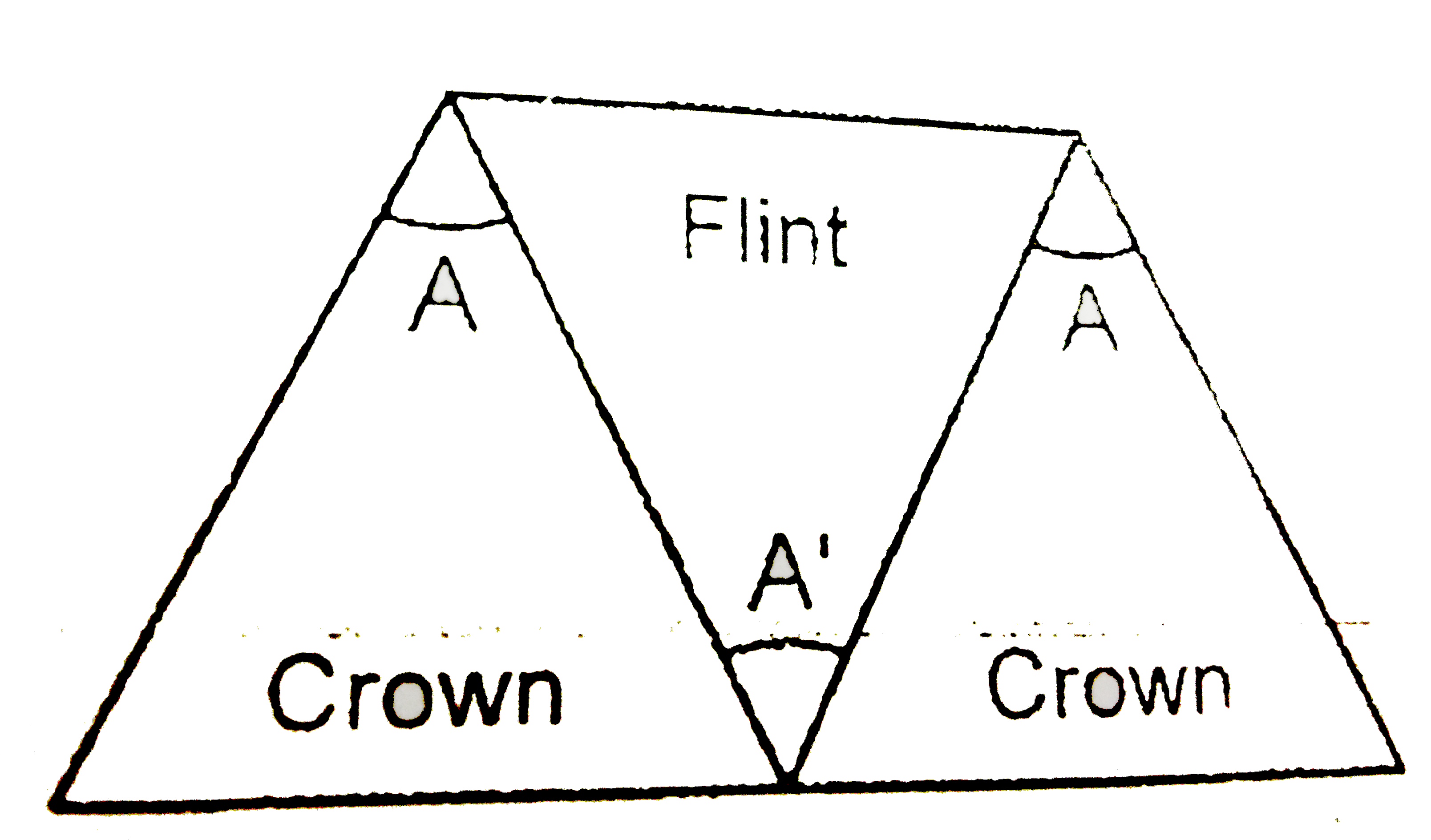Two thin prisms are combined to form an achromatic combination. For prism I, A=4∘,μR=1.35,μY=1.40,μv=1.42 For prism II, μ′R=1.7,μ′Y=1.8andμ′V=1.9 . Find the prism angle of prism II and the net mean deviation.
Step by step video & image solution for Two thin prisms are combined to form an achromatic combination. For prism I, A=4^(@),mu_(R)=1.35, mu_(Y)=1.40,mu_(v)=1.42 For prism II, mu_(R)^(')=1.7, mu_(Y)^(')=1.8 and mu_(V)^(')=1.9 . Find the prism angle of prism II and the net mean deviation. by Physics experts to help you in doubts & scoring excellent marks in Class 12 exams.
Updated on:21/07/2023Topper's Solved these Questions
- GEOMETRICAL OPTICSBook:PHYSICS GALAXY - ASHISH ARORAChapter:GEOMETRICAL OPTICSExercise:Practive Exercise 5.9
Explore 5 Videos
- GEOMETRICAL OPTICSBook:PHYSICS GALAXY - ASHISH ARORAChapter:GEOMETRICAL OPTICSExercise:Discussion Question
Explore 29 Videos
- GEOMETRICAL OPTICSBook:PHYSICS GALAXY - ASHISH ARORAChapter:GEOMETRICAL OPTICSExercise:Practive Exercise 5.7
Explore 7 Videos
- ELECTROSTATICSBook:PHYSICS GALAXY - ASHISH ARORAChapter:ELECTROSTATICSExercise:Unsolved Numberical Problems
Explore 73 Videos
- HEAT AND THERMAL EXPANSIONBook:PHYSICS GALAXY - ASHISH ARORAChapter:HEAT AND THERMAL EXPANSIONExercise:UNSOLVED NUMRICAL PROBLEMS FOR PREPARATION OF NSEP, INPhO & IPhO
Explore 82 Videos
Similar Questions
Knowledge Check
If μv=1.530andμR=1.5145, then disperisve power of a crown glass is
A0.0164B0.00701C0.0132D0.032Find the minimum and maximum angle of deviation for a prism with angle A=60∘ and μ=1.5
A37∘B49∘C60∘D90∘An achromatic prism is made by combining two prisms P1(μv=1.523,μr=1.515) and P2(μv=1.666,μr=1.650) Where μ represents the refractive index if the angle of the prism P1 is 10∘ then the angle of the prism P will be
A5∘B7.8∘C10.6∘D20∘
Find the angle of the flint glass prism which should be combined with a crown glass prism of 6∘ so as to give dispersion but no deviation.
For crown glass,μv=1.520,μR=1.48
For flit glass, μv=1.78,μR=1.72
View SolutionThree thin prisms are combind as shwon in figure. The refractive indices of the crown glass for red, yhelwo and violet rays are μr,μy and μv respectively and those for the flint glass are μ'r,μ'y and μv respectively . Find the ratio A'/A for which (a) system produces deviation without dispersion (achromatic combination ) and (b) system produces dispersion without deciation (direct vision arrangement).

View SolutionAn achromatic prism is made by combining two prisms P1(μv=1.523,μr=1.515) and P2(μv=1.666,μr=1.650), where μ represents the refractive index. If the angle of the prism P1 is 10∘, then the angle of prism P2 will be
View SolutionAn achromatic prism is made by combining two prisms P1(μv=1.523,μr=1.515) and P2(μv=1.666,μr=1.650) Where μ represents the refractive index if the angle of the prism P1 is 10∘ then the angle of the prism P will be
View SolutionAn achromatic prism is made by crown glass prism (Ac=19∘) and flint glass prism (AF=6∘) . If .Cμy=1.5 and .Fμv=1.66, then resultant deviation for red coloured ray will be
View Solution


